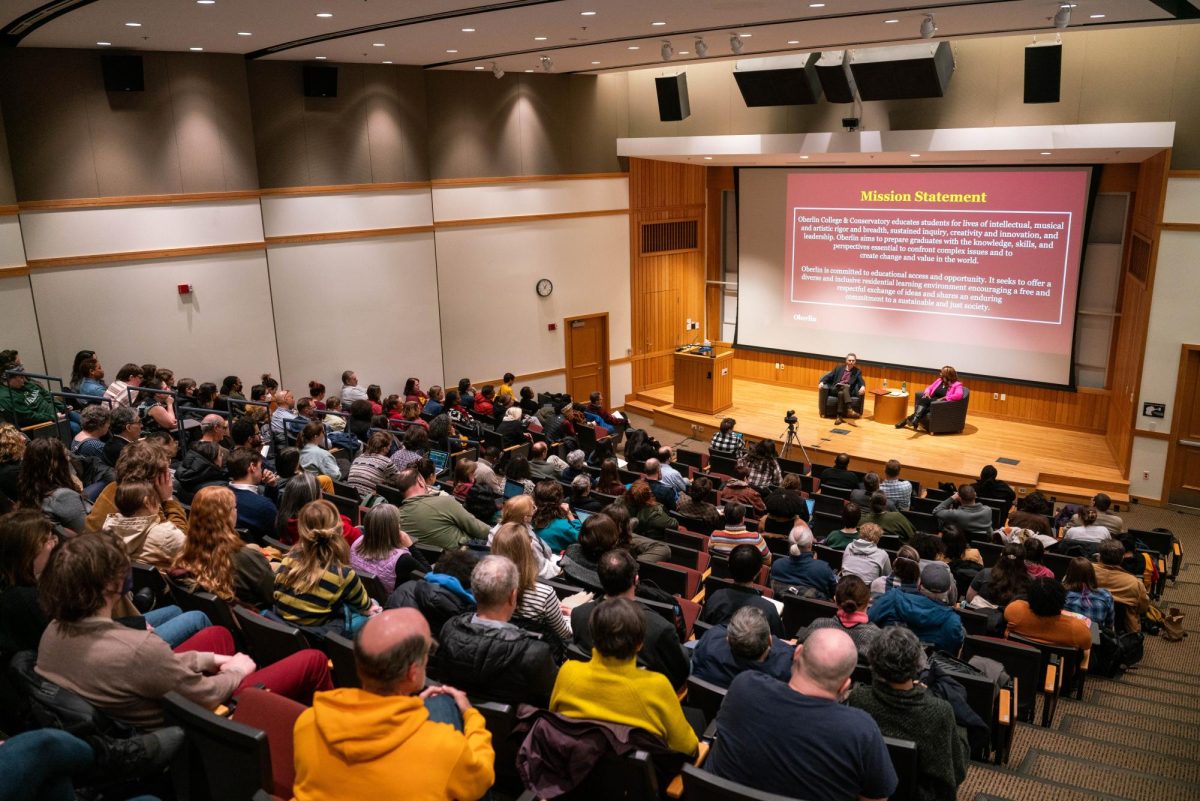$10 Term Bill Fee Funds Carbon Neutrality Efforts
March 14, 2014
Next semester, an extra $10 will be tacked onto term bills in order to finance Oberlin’s Green EDGE Fund. The Board of Trustees approved increasing a proposal last week to increase the Green EDGE Fund to $30 per semester. Additional funding will be directed toward the new Carbon Management Fund, an initiative to finance carbon sequestration projects in the Oberlin area.
“We’re taking the commitment Oberlin has to being carbon neutral by 2025 and generating local projects that will allow those investments in sustainability to impact members of the greater Oberlin community,” said Tani Colbert-Sangree, OC ’13, and leader of the project.
“The estimated carbon footprint in 2025 is going to be around 7,000 tons of CO2,” Colbert-Sangree said. “That’s going to persist due to heating buildings with natural gas and transportation. Those two sources combined is going to be the emissions gap that we need to account for and offset.”
According to Colbert-Sangree, the new Carbon Management Fund will exist within the current funding structure of the Green EDGE Fund. While Green EDGE projects focus on improving community spaces and campus initiatives, the Carbon Management Fund instead targets local farmers and homeowners that might contribute to carbon emissions.
“The idea is to impact here instead of around the world,” said Paul Paschke, College senior and Student Senate’s green liaison. “The Green EDGE is worried that the College, [in trying to account for carbon offsets by 2025], will buy the offsets from some corporation that will ‘save the rainforest.’”
According to College senior Evan Tincknell, “Project ideas will be developed as a collaboration between the Carbon Management Fellow, Oberlin students and faculty and other interested community members.”
Suggested projects include a plan to encourage local farmers to use more sustainable fertilizers for maintaining soil quality, installing geothermal heat pumps in local homes, planting trees and use biodigesters to sequester the methane produced by farm waste.
“We’re trying to promote projects that won’t negatively affect people,” Colbert-Sangree said. “Projects that these farmers would be willing to accept and that don’t require massive shifts in how they operate.”
The Carbon Management Fund will also work to quantify the carbon offsets generated by its projects. As of now, there is no way to determine how much money the College will save in investing in these projects or how many carbon offsets have been produced. Similar to the Efficiency Loan project, the Green EDGE Fund has found success in quantifying energy efficiency and seeking reimbursement for increased efficiency.
“If the energy or water savings could be calculated and the College actually pays us back for their savings, they end up saving more money than they invest and we get more carbon offset,” Tincknell said. “It’s a win-win situation. If we just fund them as grants, that’s not the most effective. The Carbon Management Fund is spurred by the idea of a new system for funding, tracking and quantifying savings for carbon offset projects.”
Faculty in the Environmental Studies department also expressed their eagerness to help the Carbon Management Fund. These professors pledge to engage their students in the research and development of necessary components of the Fund’s projects as well as quantifying the resulting greenhouse gas sequestrations.
“There is a lot of research and data collection required to fully account for a carbon offset project,” Colbert-Sangree said. “These needs are fulfilled by partnering with related classes in the College.”
Despite the prominence of the Fund’s upcoming initiatives, some question the necessity of the raise in Green EDGE’s term fee.
Green EDGE said its long-term goal is to work within the Oberlin Project’s Climate Positive Development Program to make Oberlin climate positive by 2050. “We’re providing what I believe is a better solution to these global carbon offsets,” said Colbert-Sangree. “We’re acting as a model for other colleges that have signed similar commitments to impact their local communities instead of purchasing offsets that they have no connection to.”






















